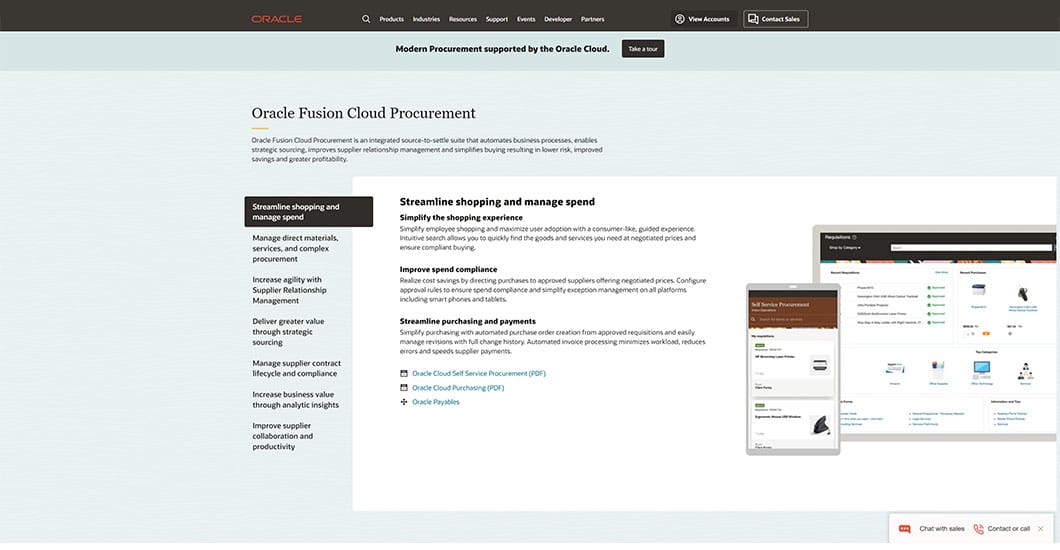A spend-management strategy is a financial planning method for keeping your costs under control.
Learn how to use it for your business. First, we’ll look at what spend management is and why it’s important. Then we’ll review the steps which form an effective spend-management strategy. Finally, we’ll look at how automated tools can help you implement your spend-management methods more efficiently.
What Is Spend Management?
Spend management, often referred to more narrowly as spend analysis or spend analytics, is a systematic method of monitoring, analyzing, controlling and optimizing how much a company spends on expenses associated with procurement of goods and services.
It encompasses management of spending on areas such as:
- Services such as marketing agencies and IT management
- Suppliers (supplier relationship management)
- Product categories (category management)
- New product development
- Inventory management
Because it focuses on the procurement of goods and services, spend management doesn’t include management of spending on payroll or employee expenses such as business travel.
Spend management involves monitoring data on procurement expenses, analyzing historic spending patterns and predicting future trends, with an aim toward cutting costs. To reduce costs, spend management uses methods such as strategic supplier selection. Spend management can be automated through the use of spend-management or procurement software.

Why Is Having a Spend-Control Strategy Important?
Using spend-analysis methods benefits companies in multiple ways. It helps businesses:
- Improve financial planning by predicting upcoming expenses
- Identify areas for strategic cost-cutting
- Highlight expense categories that need additional financing
- Avoid cash-flow crunches
These benefits make spend management an important component of effective financial planning and budgeting.
What Are the Steps in Business Spend Management?
The process of spend analysis can be broken down into 7 major steps:
- Appoint a spend manager
- Collect data on expense sources
- Centralize spending data
- Group expense categories
- Do a spend analysis
- Analyze ways to cut costs
- Track your performance
Each of these steps to manage business spend includes its own procedures and best practices. Let’s look a little more closely at what each step involves.
1. Appoint a Spend Manager
A spend manager or procurement manager is tasked with responsibilities such as analyzing and managing budgets, communicating between departments about budgeting issues and opening purchase requests.
Appointing a spend manager helps you coordinate your spend-management efforts for optimal efficiency. Depending on the size of your company, your budget and other considerations, a spend manager can be a dedicated procurement manager, a function assigned to another qualified employee or a contact at a third-party spend-management outsourcing provider.
2. Collect Data on Expense Sources
Your spend manager’s first task is to assemble data on where you’re spending money on goods and services which fall outside the scope of payroll. This involves reviewing budgeting and expense data from each relevant department. Your accounting professional can assist with this task.
To check the accuracy of data, you should compare data on your books with corroborating data such as receipts, bank statements, credit card statements and inventory counts. Auditing data in this way will help prevent errors from creeping into your spending management system.
3. Centralize Spending Data
As you collect and verify your data, it should be integrated into a central database that includes all the information from different areas of your company where you spend money. This will make it easier to store, analyze and manage your spending data.
Procurement-management software can provide you with a central platform for managing your spending data.

4. Group Expense Categories
Once you have all the data you need, you can group your spending into categories to make it easier to analyze.
Expenses may be categorized using the types of categories which appear in your company’s financial statements, such as relevant categories listed on Internal Revenue Service form Schedule C. You may wish to include customized categories for purposes of sorting your data, such as expenses associated with a particular product category, service or vendor.
5. Do a Spend Analysis
Once you’ve grouped your data into categories, you can do a spend analysis. There are many ways to conduct a spend analysis depending on what you want to focus on.
For example, here are a few common approaches to spend analysis:
- Vendor spend analysis: identifying how much of your spending comes from your most important vendors
- Category spend analysis: determining how your spending breaks down into different product categories
- Item spend analysis: analyzing spending for specific items such as parts
- Tail spend analysis: analyzing spending on minor categories or items which fall outside major spending categories but can add up over time
- Payment term spend analysis: analyzing how your scheduling of payments to suppliers affects variables such as discounts, interest and cash flow
- Contract spend analysis: verifying compliance with negotiated contract terms
As these examples illustrate, there are many specialized ways to do spend analysis in supply-chain management and procurement. If your spend analysis needs are complex, consider hiring a procurement manager or outsourcing your spend management.
6. Analyze Ways to Cut Costs
Your spend analysis positions you to identify ways you can cut costs. Methods for cost-cutting include:
- Eliminating unnecessary spending, such as duplicate orders
- Negotiating volume discounts with major suppliers and vendors
- Switching suppliers or vendors
- Delegating responsibility for inventory optimization to the product manufacturer (vendor managed inventory)
- Requiring authorized approval for purchase orders
When cutting costs, focus on trimming your largest expenses, as well as eliminating unnecessary spending.
7. Track Your Performance
To make sure your spend-management strategy is effective, you should establish key performance indicators (KPIs) to measure and monitor your spending.
Examples of important procurement KPIs include:
- Purchasing spending as a percent of sales revenue
- Spending per supplier
- Cost reduction (purchase price minus last price paid)
- Purchase order cycle time
- Cost of order
- Cost avoidance (purchase price minus price quoted)
- Procurement return on investment (sum of cost avoidance and cost reduction divided by cost of managing procurement)
A procurement management professional can help you select KPIs appropriate for your needs. Use automated dashboards and a routine reporting review system to check your performance periodically.
What Are Some Leading Spend-Management Solutions?
Using specialized software can increase the efficiency of your spend management. Spend-management software, more commonly called procurement-management software, offers features such as:
- Syncing with other relevant software such as accounting apps
- Automated capture of relevant spending data, such as invoices and receipts
- Centralized viewing of spending across your organization
- Project workflow tools for managing spending requests and approvals
- Automated management of accounts payable updates and bill payments
- Spending dashboards and reports
When comparing spend-management solutions, look for a solution that integrates with your existing software, lets you automate routine data capture and procurement tasks and provides you with robust reporting tools. Leading procurement-management solutions include SAP Ariba, Oracle Fusion Cloud Procurement and Promena.
Note that procurement-management software shouldn’t be confused with expense-management software for tracking employee spending on expenses such as travel. Even some software review sites blur this distinction. Be sure that the software you’re purchasing has the features you need.
Control Your Spending to Increase Your Profits
Spend management is a money-management strategy that helps you systematically control and reduce your costs. Implementing a spending strategy can help you improve your financial forecasting, cut costs, identify where you need financing and avoid cash-flow crunches.
Effective spend management starts by appointing a spend manager and integrating your spending data into a single database. You then can categorize your expense categories, analyze your spending and implement cost-cutting measures.
Your spending analysis may indicate that you need additional financing to avoid cash-flow issues. If you require financing to cover your costs, take a few minutes to fill out our free, no-obligation prequalifying form and see your loan options.











